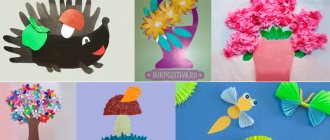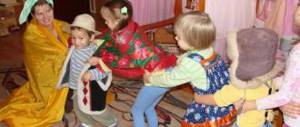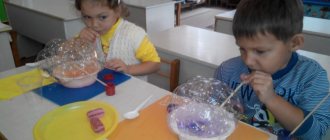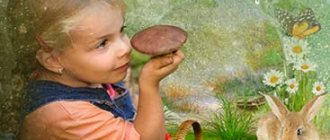Research work on work training
Icon painted more than 600 years ago Icon painted in our time
In a word, each of the paints that both artists and painters use today has its own long and amazing history.
1.2.The process of preparing paints
We read and studied in labor training lessons that the composition of paints includes: pigment and binder
.
First
, pigment
is a dry dye, a fine colored powder that is made from clay, colored stones, bright sand, etc.
The second
is a binder
, a viscous substance that will make the colored powder more liquid, convenient for application to paper or any other surface.
Dry dye cannot stick to a sheet of paper, so you need a binder that glues and binds the particles of dry dye into a single colored paint mass. The artists took what was at hand: oil, honey, egg, etc. Different binders produce different paints with different names.
| Name of paints | Oil | Egg | Water | Glue |
| Watercolor | + | |||
| Adhesive | + | + | ||
| Oily | + | |||
| Tempera | + |
After analyzing the literature and articles on the Internet, you can describe how paints are prepared. First we look for raw materials. It can be coal, chalk, clay, lapis lazuli, malachite. Raw materials must be cleaned of foreign impurities. The materials must then be ground to powder. The resulting powder is the pigment.
Then the pigment must be mixed with a binder. As a binder you can use: egg, oil, water, wax, glue, honey. The paint must be mixed well so that there are no lumps. The resulting paint can be used for painting.
Having found out the composition of paints, having learned about the process of preparing paints, we came to the conclusion that we could make some paints ourselves and compare from memory with ready-made paints, which we painted with many times
1.3.Description of experiments
We had just some natural pigments, binding substances, and we planned four experiments. As a whole class, we took on this task, which was not easy, as it turned out.
1) First we decided to create watercolor paints
We made watercolors by boiling onion skins in water. The mark it leaves is translucent. By the way, in earlier times mineral substances were also used to make watercolors by grinding them into fine powder.
Experimental plan No. 1
We took onion skins
2. Soaked it in water.
3. Placed it on the electric stove to heat up.
4. Place a chicken egg in a bowl; it should turn burgundy with the onion peel pigment.
When the water was heated, the pigment contained in the onion peel began to pass into the water, it began to acquire a burgundy color, and the egg also turned burgundy. When the water cooled down, we took out the husks from it, and with the resulting colored solution we tried to draw something, this is what we came up with.
Design and research work on technology article on technology on the topic
Design and research work on technology
The subject “Technology” is a practice-oriented subject. It is based on independent practical activity of students, based on setting the goal of obtaining a product that satisfies human needs. The methods for obtaining this product can be very diverse. At the same time, the educational process turns from a method of transmitting educational information into a method of independently obtaining it, during which the student develops his cognitive and creative abilities.
All objects of technological labor and products are ultimately projects. Therefore, project activity in a technology lesson is one of the main types of educational technologies.
During the year, in class, students complete creative educational projects within each section of the program, simple, on a general topic. Therefore, projects within the framework of extracurricular activities do not cause difficulties for my students, but on the contrary, interest, since this is a result that will be needed not in the distant future, but today, now (for example, an apron), which is useful not only for themselves, but also for others .
Preparing 5th grade students for this work requires special attention from me, because... they have no experience in this kind of work and need my help. Girls should understand the practical meaning of the technology design process, which will increase their motivation to continue working on the project. Students get acquainted with the algorithm for completing a project; to help them, I have compiled a booklet showing the sequence of completing a creative project.
My students do most of the work on the project independently. The most important and most difficult thing for them at the beginning is setting the goal of their work. It is necessary to help everyone find the answer to the question why I am going to do this project. Having answered it, the schoolgirl determines the purpose of her work. The question then arises as to what should be done about it. The answer is the tasks of the job. The next question is how to do this. Having understood this, the student will select the methods and techniques that she will use when completing the project. It is also necessary to determine what you want to get as a result. This will help present the expected result to the designer. Only after thinking through the answers to all these questions can you begin to work.
The technological stage requires increased attention and perseverance from students. Here we discuss together the sequence of manufacturing the product, and everyone does their own practical work. When summing up the results, children conduct a self-analysis of the advantages and disadvantages of the project and give self-evaluation of their work.
In the subject program, I have laid down approximate topics for design and research work in extracurricular activities, which students choose at the beginning of the year or propose their own. Approximate topics of project work have been developed for each year of technology training. It is quite wide and is constantly updated taking into account the interests and capabilities of my students and the existing material and technical base of the office.
When applying the project method, I take into account the gradual transition from simple to complex, so projects are classified not only by class, but also by the degree of complexity of their implementation. In high school, topics are included in the following sections: “Home Economics,” “Professional Self-Determination,” etc. Projects of high school students are complicated by the preparation of instruction cards, drawings and product diagrams, and economic calculations.
Project work can be completed by students individually or in pairs throughout most of the school year (October-March). When starting work, the author of the project, independently or with my help, draws up a plan for the upcoming work. And it is very important for students to learn to plan and work according to a plan - this is one of the most important not only academic, but also social skills that a student must master.
Design as a method is built on the basis of active learning: the student’s independent search for what he needs to know. Therefore, to get answers to questions, my students themselves look for them in various sources, ask questions to their classmates and answer each other, and use various research methods: observation, experiment, survey, questionnaire.
You can learn a lot just by watching other people use products, so I encourage students to shop around, find out prices, and monitor demand. Often, in project work, schoolchildren need to do marketing research. To do this, they create a questionnaire, interview the people for whom the design product is intended, and obtain information about what people need and what they prefer. The most valuable way for schoolchildren to find out the truth is experiment. For example, in the project work on cooking “Flavorous food as a means of preventing excess weight in adolescents,” students prepared several alternative dishes and then invited boy tasters to confirm the assumption about the influence of food on the amount of food eaten. The more students can experiment, work with models and layouts, and the more they try to do something using real materials, the more successful the project will be.
Also, to develop student activity, finished student works and project sheets from project folders are displayed in the gymnasium workshop. To increase student motivation, learning takes place outside of school: students discuss their ideas at home - this gets families involved in children's work, while increasing the role of technology in the school curriculum and strengthening connections between school and home.
Design must be carried out together with the teacher, where the teacher is the leader of the students’ creative activities. As a mentor, I must clearly plan the organization of project activities and carefully consider the list of stages of schoolchildren’s work on the project, the deadlines for completing each stage. If the project is carried out by several students, then the contribution of each should be clearly defined.
The process includes: creation of a design product, preparation of design documentation and protection of the project. Students complete a significant part of the project, especially related to its descriptive part and design, at home; I provide consultations on each stage after lessons. We discuss the content, I clarify the design procedure, research (practical part), its results, monitor the process of obtaining the finished product, and help prepare for the defense of the project.
The implementation of a creative project necessarily ends with its defense in front of the class, then in front of the gymnasium jury. Students present design documentation and the product for defense. Such protection introduces a spirit of healthy competition into the educational process, allows not only to familiarize the team with the work of everyone, and for students to draw certain conclusions about their work in comparison with others, including self-esteem, but also helps them develop the ability to defend their creative ideas.
In technology projects, the design result can be a memo, recommendations (a nutrition project), drawings, products made from various types of materials, or a master class.
I would like to present several design works.
“The scarf is a wonderful piece of paper”
In this work, two of my students conducted research on the use of scarves in the wardrobe of both women and men, its meaning for Russian women, and learned various ways to wear scarves. As a result, they independently held a presentation at the defense of the project - a master class on tying them.
"Fashion accessories made from recycled materials"
Summer is a time of bright colors and rich tones. Is it possible to do something eye-catching for the new season? Let's make a bracelet based on a ring cut from a PLASTIC BOTTLE. Yes Yes! Sometimes wonderful jewelry is made from this simple material. The project is aimed at developing artistic and aesthetic abilities and technological skills. The work proposes another way to rationally use waste from the textile industry, economic resources, and recalls the fight against land pollution from household waste.
“Fast food is a disaster for schoolchildren”
All ancient medical schools stated that most diseases are caused by poor diet. The work reflects the issues of proper, healthy nutrition for schoolchildren, and gives an idea of healthy and harmful foods. The practical part includes studying the composition of food products from labels and decoding food additives, a survey among students in grades 5-8 about the dangers of fast food products.
Working on a project allows my students to conduct a survey among classmates or an original experience, show their own creative vision of the process and result of the work, create a project product that others can use (new in the familiar, a gift for loved ones, a classroom script, etc.).
My students take part in design and research activities with great pleasure. Students see the social and personal significance of their project work, which leads to increased learning motivation, development of hard work, and creative activity.
And in conclusion…
Do you want your children to be capable and talented? Then help them take the first steps on the steps of creativity, but... don’t be late and, while helping... think for yourself. B.P. Nikitin







